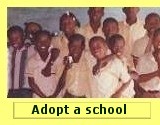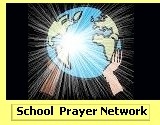 |
Contact usUnited CaribbeanDisaster Mitigation
Community Empowerment
Disaster Action Kids Club
The Body of Christ
|
home >> caribbean mitigation UNITED
CARIBBEAN TRUST-Caribbean Mitigation
UNITED
CARIBBEAN TRUST-Caribbean MitigationVulnerability is the exposure of people, their work, and environment to the effects of a Hazard. To determine Vulnerability, we have to identify the buildings, agricultural areas, Roads, Bridges, Transport, Pipelines, Electrical line, etc. and their location in high-risk areas. It is also prudent to know the location and state of access routes to the community and identify alterative routes. We have to know where people are exposed to danger and identify their personal vulnerability, especially:
This necessitates the preparation of a data base of human and material resources, their state of readiness, location and availability. INVENTORY AND LOCATION OF RESOURCES Physical Spaces and Safe Facilities: These include Green areas, parking lots, community centres
that could function as meeting places or temporary shelters in the event
of an emergency. Transportation: This includes identifying private and public transportation that can be used in the event of an emergency. Basic Medical and First Aid Equipment This necessitates the identification and/or training,
of teams skilled in delivery of basic Triage and First Aid and the stock
piling of a fundamental and well-stocked first aid kit. Rescue and Protection Equipment This includes:
These and other sources of Energy supply should be identified
and include: Water Systems These include pipelines, hydrants, wells, springs, and other sources of water supply.
Identify alternative their disposal. Any other resource that exists in the community that could be useful in the event of an emergency should be compiled in an information database and hard-copied to teams members. This inventory of community resources informs the knowledge needed for an immediate and rapid response to an emergency situation. It allows also a measurement of the existing level of organization at the community level, and identifies needs in significant areas such as preparedness, education, and additional information required by the community to make informed decisions on mitigation through a precise action plan. Database of Community Information This should include: Community Emergency team Primary and Secondary Community Map This map identifies the community’s physical resources,
along with areas of weakness along with precise locations of incipient
hazards. It will also help to identify physical areas where mitigation
logistics may need to be applied beforehand. Source: 'Extracts from Community Emergency Plan' CDERA |
|
| Copyright © 2022 www.UnitedCaribbean.com. All rights reserved. Disclaimer Click to Contact us |
 •
Newborns and Babies;
•
Newborns and Babies;






